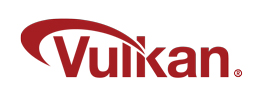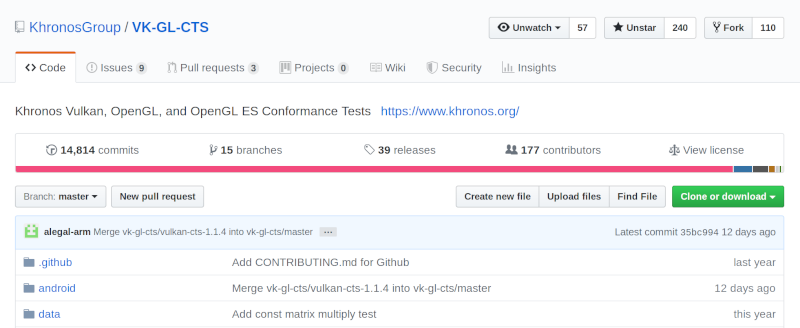Even if you are not a gamer, odds are that you already heard about Vulkan graphics and compute API that provides high-efficency, cross-platform access to modern GPUs. This API is designed by the Khronos Group and it is supported by a new set of drivers specifically designed to implement the different functions and features defined by the spec (at the time of writing this post, it is version 1.1).

In order to guarantee that the drivers work according to the spec, drivers need to pass a conformance test suite that ensures they do what it is expected from them. VK-GL-CTS is the name of the conformance test suite used for certify the conformance on both Vulkan and OpenGL APIs and… it is open-source!

As part of my daily job at Igalia, I contribute to VK-GL-CTS from fixing some bugs, improving existing tests or even writing new tests for a variety of extensions. In this post I am going to describe some of the work I have been doing in the last few months.
VK_EXT_host_query_reset
This extension gives you the opportunity to reset queries outside a command buffer, which is a fast way of doing it once your application has finished reading query’s data. All that you need is to call vkResetQueryPoolEXT() function. There are several Vulkan drivers supporting already this extension on GNU/Linux (NVIDIA, open-source drivers AMDVLK, RADV and ANV) and probably more in other platforms.
I have implemented tests for all the different queries: occlusion queries, pipeline timestamp queries and statistics queries. Transform feedback stream queries tests landed a bit later.
VK_EXT_discard_rectangles
VK_EXT_discard_rectangles provides a way to define rectangles in framebuffer-space coordinates that discard rasterization of all points, lines and triangles that fall inside (exclusive mode) or outside (inclusive mode) of their area. You can regard this feature as something similar to scissor testing but it operates orthogonally to the existing scissor test functionality.
It is easier to understand with an example. Imagine that you want to do the following in your application: clear the color attachment to red color, draw a green quad covering the whole attachment but defining a discard rectangle in order to restrict the rasterization of the quad to the area defined by the discard rectangle.
For that, you define the discard rectangles at pipeline creation time for example (it is possible to define them dynamically too); as we want to restrict the rasterization of the quad to the area defined by the discard rectangle, then we set its mode to VK_DISCARD_RECTANGLE_MODE_INCLUSIVE_EXT.

If we want to discard the rasterization of the green quad inside the area defined by the discard rectangle, then we set VK_DISCARD_RECTANGLE_MODE_EXCLUSIVE_EXT mode at pipeline creation time and that’s all. Here you have the output for this case:

You are not limited to define just one discard rectangle, drivers supporting this extension should support a minimum of 4 of discard rectangles but some drivers may support more. As this feature works orthogonally to other tests like scissor test, you can do fancy things in your app :-)
The tests I developed for VK_EXT_discard_rectangles extension are already available in VK-GL-CTS repo. If you want to test them on an open-source driver, right now only RADV has implemented this extension.
VK_EXT_pipeline_creation_feedback
VK_EXT_pipeline_creation_feedback is another example of a useful feature for application developers, specially game developers. This extension gives a way to know at pipeline creation, if the pipeline hit the provided pipeline cache, the time consumed to create it or even which shaders stages hit the cache. This feature gives feedback about pipeline creation that can help to improve the pipeline caches that are shipped to users, with the final goal of reducing load times.
Tests for VK_EXT_pipeline_creation_feedback extension have made their way into VK-GL-CTS repo. Good news for the ones using open-source drivers: both RADV and ANV have implemented the support for this extension!
Conclusions
Since I started working in the Graphics team at Igalia, I have been contributing code to Mesa drivers for both OpenGL and Vulkan, adding new tests to Piglit, improve VkRunner among other contributions.
Now I am contributing to increase VK-GL-CTS coverage by developing new tests for extensions, fixing existing tests among other things. This work also involves developing patches for Vulkan Validation Layers, fixes for glslang and more things to come. In summary, I am enjoying a lot doing contributions to the open-source ecosystem created by Khronos Group as part of my daily work!
Note: if you are student and you want to start contributing to open-source projects, don’t miss our Igalia Coding Experience program (more info in our website).
